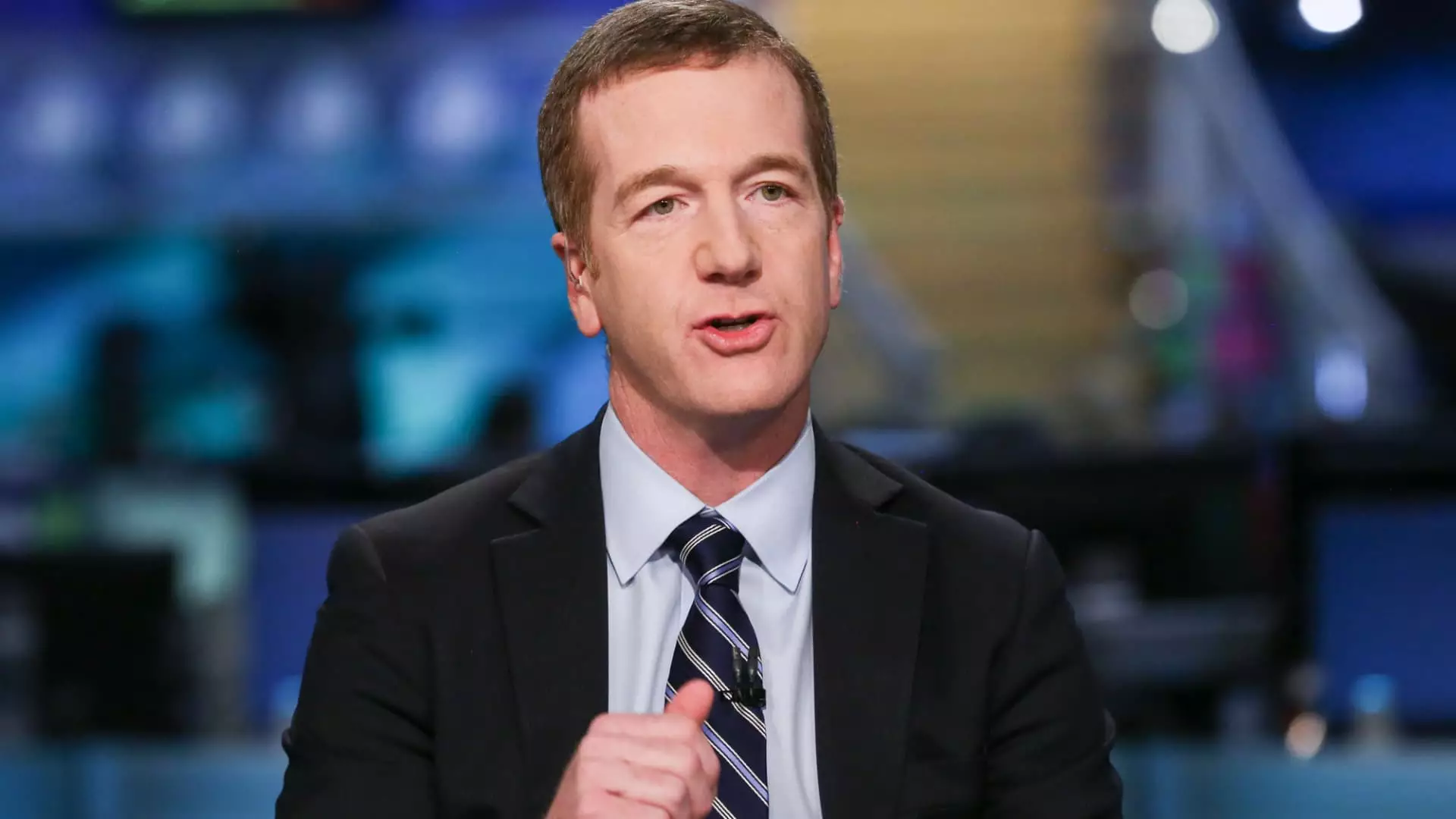In the tumultuous seas of the financial market, volatility often feels like a double-edged sword. While there are seasoned voices advocating for the potential silver linings amidst uncertainty—as noted by Morgan Stanley’s Mike Wilson—the real danger lies in an unnuanced embrace of risk. With President Trump’s shifting tariff strategies spiraling into a complex web of trade dilemmas, one cannot help but fear that merely “buying the dip” could lead many into a treacherous financial quagmire.
Wilson’s assertion that investors should pounce on moments of market weakness might strike a chord with those who have enjoyed a consistent cycle of preemptive bailouts from the Federal Reserve. However, as we now stand on the precipice of potential economic turbulence, this strategy appears more susceptible to criticism than to blind trust. Given that Wilson has acknowledged a “very tricky” trading environment ahead, a more cautious approach might be warranted rather than an impulsive dive into the depths of an uncertain market.
The Illusion of Safety Nets
For years, the financial fabric has been stitched together with the comforting threads of Federal Reserve interventions and fiscal stimuli. The absence of these safety nets has propelled investors into a realm of emotional decision-making, often clouded by a misplaced sense of security. Operating in this “safety-net-free” atmosphere requires a profound re-evaluation of risks versus rewards, which many novice investors may be ill-equipped to undertake.
The notion that we can simply wait for S&P 500 levels to retreat before investing inherently invites a naive optimism that overlooks the fundamental factors that influence equity prices. While Wilson points to a preferred entry point at around 5,480, it raises significant concerns. How do we ascertain that this level won’t become elusive in the face of unexpected geopolitical changes or economic downturns?
Value vs. Illusion
The debate on whether stocks currently hold true value—or whether they are merely subjected to a facade of worth—has never been more pertinent. Wilson’s insights regarding the potential hidden gems among undervalued stocks prompt a necessary scrutiny. However, without rigorous evaluation, investors risk becoming engulfed in a mirage, investing in assets that carry potential pitfalls unbeknownst to them.
Digging beneath the surface is not just about discovering price dips but involves understanding the intrinsic value of companies—their operational stability, market positioning, and growth potential in a rapidly evolving landscape. As access to vast amounts of data becomes increasingly democratized, many choose to skim the surface rather than delve deep into the undercurrents that define real value.
Networking and Knowledge
As investors contemplate their next moves, attending events like CNBC Pro LIVE could provide critical insights into navigating these tumultuous waters. Such gatherings aren’t merely networking opportunities but a chance to gather diverse viewpoints and enrich one’s understanding of the market. Connecting with seasoned experts amplifies the wealth of knowledge and may illuminate paths that investors have yet to consider.
While the allure of actionable strategies is enticing, cautious navigation requires balancing enthusiasm with prudent skepticism. The financial landscape is ripe with complexity, and the false security of potential market “bounces” must be met with due diligence and a stalwart commitment to thorough analysis. In the end, genuine wisdom in investment lies less in following trends and more in well-informed, strategic decision-making amidst chaos.

Leave a Reply